A pair of elevated, phased quarter wave verticals for 40m
Now that the AM broadcast stations have moved from the top end of 40m this now seems to be the new band of choice for a lot of people. In early April 2009 I decided that I would put up a single quarter wave vertical and try out the band. I had two "spare" 12m Spiderbeam poles so decided that it would be an easy job to erect one in my back garden on the original site of my K9AY receiving loops.
The first antenna was erected as a ground mounted vertical and connected to the ground system for my 80m 4-Square - that was not a good idea! The antenna just didn't work so I decided to give it it's own radial system and I started with just four quarter wavelength radials on the ground. The performance was again very poor so I decided to try raising the radials. Initially I found some garden canes and just supported the radials just one metre above the ground. Now I was making progress and the antenna started to work very well.
As the site of the antenna was right in the middle of my lawn I decided that I should raise the antenna and radials to a height of approximately three metres. I didn't fancy having to negotiate the radials every time I wanted to go out in the garden or cut the lawn.
The single vertical, raised three metres performed very well and I started to have a lot of fun working DX on 40m. However, as I am always keen to work any DX and having experienced a single quarter wave vertical on 80m and the advantages of a phased array I decided that I could put up another vertical for 40m on the site of my original 80m vertical as the mounting bracket was still there and phase the two to give some gain and directivity.
The second vertical was erected using the same dimensions as the first vertical and a simple coaxial line is used for the phasing delay.
The antennas are 4mm diameter insulated wire supported on a 12m Spiderbeam pole and the radials are 1.5mm insulated wire, each a quarter wavelength long. The feedpoints are approximately 3m above ground as are the radials - as far as is practical and available support points allow! I did not have available supports to attach the radials to at exact 90 degree angles around the verticals so I have added two more radials to each vertical and I have just tried my best to have most directions covered!
The antennas are spaced at 13.5 metres, feed lines are electrical quarter wavelength RG6 and the phasing line is also an electrical quarter wave RG6. The main feed from the shack is RG213 and the control is carried on CATVe.
1. The original, single quarter wave vertical.
2. Two quarter wave verticals.
3. My first method of switching! The "switch box" is a Mini fuse box and the "switches" are stainless bolts with the heads cut off! Initial directions switching tests were done with my son (Martin, 2E1FVS) running out into the garden with a torch and a phone and waiting for me to tell him it was safe to move the position of the bolt to change direction. The results were pleasingly good and prompted me to build the switching unit shown below.
4. Phasing box showing the relays, antenna, phasing line, feed and control connections.
5. Phasing box.
6. Control box in the shack.
7. Martin (2E1FVS), my junior op, looking very pleased with himself after getting the phased verticals ready for testing.
I can run the FT1000MP barefoot into this antenna and the SWR does not show higher than 1.4 to 1 over the whole of the SSB portion of 40m. Front to back comparisons so far have ranged between 20db and 30db. The antennas are orientated at 330 degrees, spacing is 13.5 metres and the 3db beamwidth is around 135 degrees.
My thanks go to Martin (2E1FVS), my son, for his assistance and enthusiasm in the construction of this array.

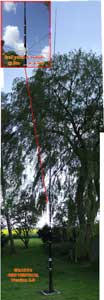
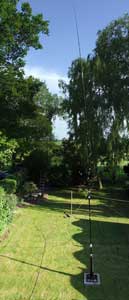
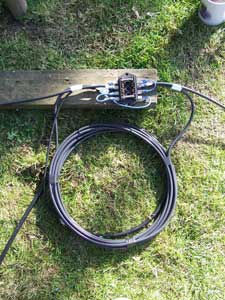

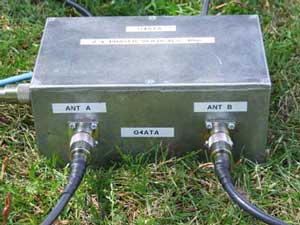
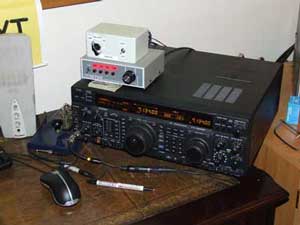
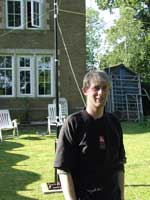
No comments:
Post a Comment